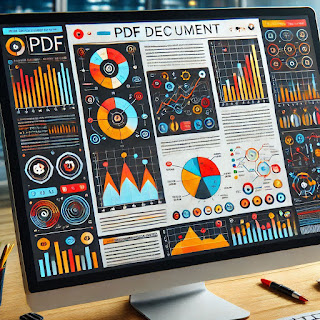How to Convert PDF to JPEG Without Losing Image Quality
PDFs (Portable Document Format) are a go-to solution for sharing documents while preserving formatting, fonts, and layout. However, there are instances when you need to extract images or convert a specific page from a PDF into the versatile JPEG format. JPEGs are widely accepted for web usage, image editing, and archiving due to their balance between quality and file size.
Why Convert PDF to JPEG?
While PDFs are ideal for documents, converting them to JPEG images may be necessary for specific use cases:
- Social Media or Website Sharing: JPEG is widely supported across websites, blogs, and social media platforms.
- Printing: High-quality JPEG conversions allow for clear and sharp printing of PDF pages or graphics.
- Editing: Extracting images from PDFs as JPEGs allows for easy editing in tools like Photoshop or GIMP.
- Archiving: JPEG images are compatible across devices, making them convenient for long-term storage.
Challenges of PDF to JPEG Conversion
When converting PDFs to JPEGs, several factors can impact the image quality:
- Resolution: Low-resolution conversions can lead to blurry or pixelated images.
- Compression: JPEG uses lossy compression, which may degrade quality if the settings are not optimized.
- Vector vs. Raster Conversion: PDFs often contain vector-based graphics, and converting these to raster JPEGs can result in loss of clarity if not done at high resolutions.
Methods for High-Quality PDF to JPEG Conversion
Here are the best tools and techniques to ensure you retain the highest quality during the conversion process:
1. Using Adobe Acrobat Pro DC
Adobe Acrobat Pro DC is a premium tool that offers excellent control over image quality during PDF to JPEG conversions.
- Open the PDF in Adobe Acrobat Pro DC.
- Select "Export PDF" from the right-hand panel.
- Choose "Image" and select "JPEG" as the output format.
- Click on "Settings" and set the resolution to at least 300 DPI for high-quality results.
- Export and save the JPEG images to your preferred location.
This method ensures professional-quality output and control over resolution and file size.
2. Using Online Tools
For quick and simple conversions, online tools are a great option. Popular options include:
- Smallpdf (smallpdf.com)
- ILovePDF (ilovepdf.com)
- PDF2JPEG (pdf2jpg.net)
Steps:
- Upload the PDF to the chosen online tool.
- Select JPEG as the output format.
- Adjust quality settings (choose higher resolution, such as 300 DPI, if available).
- Download the converted JPEG files.
Note: Some free tools may limit features or impose file size restrictions.
3. Using GIMP (Free Image Editor)
GIMP (GNU Image Manipulation Program) is a free, open-source tool for advanced image manipulation, including PDF to JPEG conversions.
Steps:
- Open GIMP and load the PDF file.
- In the import dialog, set the resolution to at least 300 DPI for high quality.
- Once the PDF page is loaded, go to "File > Export As."
- Select JPEG as the file type and set the quality to 100%.
- Save the file.
This method provides precise control over resolution and compression settings.
4. Dedicated PDF to Image Software
Standalone converters like PDFMate or PDF-XChange Editor offer tailored features for PDF to JPEG conversions:
- Import PDF files.
- Choose JPEG as the output format.
- Set a resolution of 300 DPI or higher.
- Export the converted files.
These tools often support batch conversions, making them ideal for processing multiple pages or files efficiently.
5. Mac Preview (For Mac Users)
The built-in Preview app on macOS makes PDF to JPEG conversion simple:
- Open the PDF in Preview.
- Select "File > Export."
- Choose JPEG as the format.
- Adjust the quality slider to "High" and set a resolution of 300 DPI.
- Save the file.
This is a quick and effective option for Mac users who don’t want to install additional software.
Tips for Maintaining Image Quality
To ensure the best results during PDF to JPEG conversion:
- Set High Resolution: Choose at least 300 DPI for print-quality images or 150 DPI for web use.
- Minimize Compression: Opt for lower compression settings to retain detail in the image.
- Choose the Right Tools: Use professional or dedicated software for precise control over settings.
- Preview the Output: Check the converted JPEG for quality before using or sharing it.
Converting PDFs to JPEGs without losing quality doesn’t have to be complicated. Whether you use professional software, free tools, or native apps, the key lies in understanding resolution, compression, and format settings. By following the methods outlined in this guide, you’ll be able to create sharp, high-quality JPEG images suitable for any purpose.




